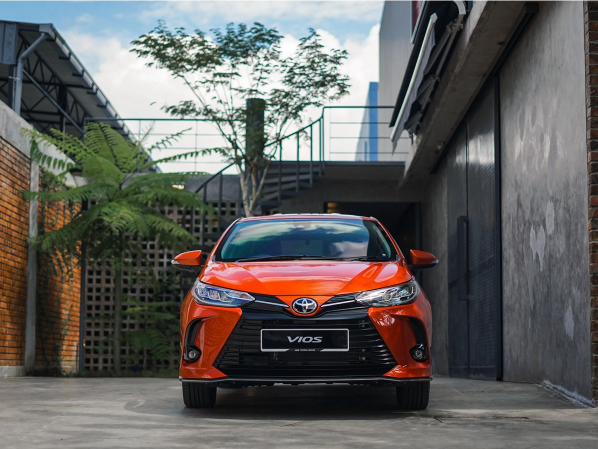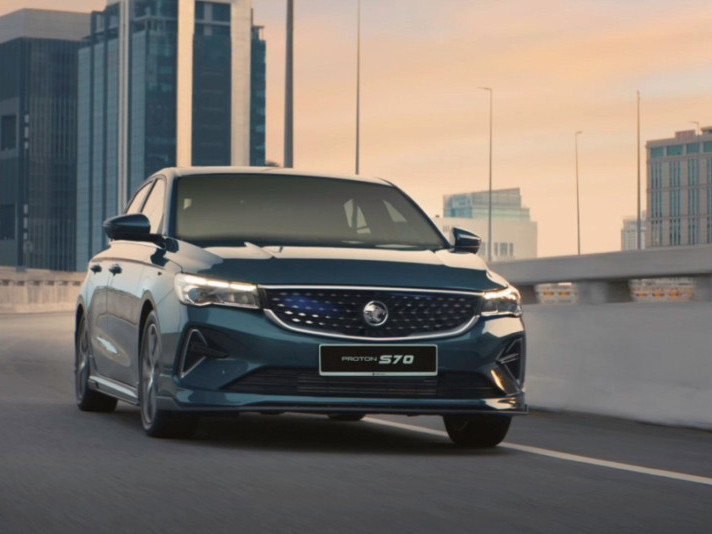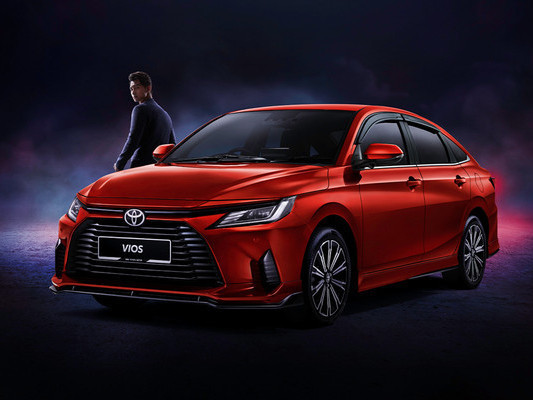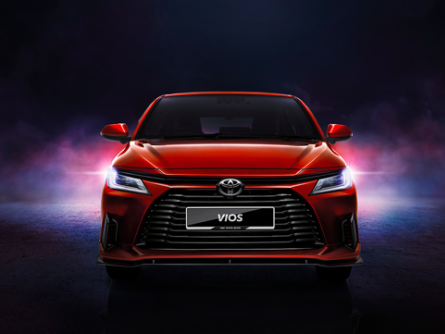Q
How many tons is Toyota Vios?
The weight of the Toyota Vios varies depending on the specific trim level and configuration, typically ranging from around 1.1 to 1.2 tonnes. For instance, the third-generation Vios has a curb weight of approximately 1,120 kg, while the fourth-generation models come in at roughly 1,150 to 1,200 kg. For the exact figures, you should check the vehicle's plaque or the official manual.
Understanding a car's weight does play a role in both driving feel and fuel economy. A lighter body generally helps boost fuel efficiency, while a slightly heavier car might feel more planted at highway speeds. Here in Malaysia, the Vios is super popular thanks to its reliability and fuel-sipping nature – it works great for daily commutes or longer drives alike. When you're looking to buy one, besides weight, it's worth paying attention to engine performance, safety features, and fuel consumption too. All these factors together determine how practical the car really is.
Special Disclaimer: This content is published by users and does not represent the views or position of PCauto.
Related Q&A
Q
How much horsepower does a 2021 Toyota Vios have?
The 2021 Toyota Vios in Malaysia comes with a 1.5-liter four-cylinder naturally aspirated engine (code 2NR-FE) that puts out 107 horsepower and 140 Nm of torque. With Dual VVT-i technology, this engine delivers power that's perfectly suited for city commuting and everyday drives. This front-wheel-drive compact sedan pairs that engine with either a Super CVT-i continuously variable transmission or a 5-speed manual gearbox, depending on the variant, and it's known for excellent fuel efficiency.
Quick note: Horsepower is the unit that measures an engine's power output – generally, the higher the number, the better the acceleration and top speed potential. But real-world driving feel also hinges on factors like torque delivery, vehicle weight, and transmission tuning. As a popular model in Southeast Asia, the Vios prioritizes a balance of reliability and fuel economy with its powertrain setup. If you're chasing more performance, the GR lineup might be more your speed – just remember, Malaysia's road conditions and traffic laws do cap how fast you can actually go anyway.
Q
How many km per liter is the 2021 Toyota Vios?
The real-world fuel efficiency of the 2021 Toyota Vios in Malaysia can vary depending on the trim level and driving conditions. Official figures for the 1.5L Dual VVT-i engine paired with the CVT gearbox suggest a combined fuel consumption of around 15 to 17 kilometers per liter. If you're mostly doing highway cruising, you might even squeeze out over 18 km/L – thanks in part to Toyota's refined powertrain and that handy Eco driving mode.
But here's the thing about fuel economy: it's influenced by a bunch of factors. Your driving style plays a big role – jackrabbit starts and heavy acceleration will definitely guzzle more fuel. Then there's the road conditions; city driving with all that stop-start traffic usually bumps up consumption by about 20% compared to smooth highway runs. How often you blast the air conditioning matters too, and let's not forget vehicle maintenance – keeping your air filter clean and spark plugs fresh goes a long way in maintaining optimal fuel efficiency.
Malaysian owners looking for more real-world numbers can check out local platforms like MyTukar or Carlist for user-reported data. A quick tip: expect the fuel economy to settle down a bit after the initial break-in period with a new car. If you suddenly notice your Vios drinking more petrol than usual, it might be worth checking if your tire pressure is low or if the engine oil is due for a change.
Over in the same segment, the Honda City's EarthDream engine tech also delivers comparable fuel sipping abilities. Ultimately, the choice might come down to which brand's after-sales network you prefer or just personal taste.
Q
What generation is the Toyota Vios 2021?
The 2021 Toyota Vios belongs to the third-generation model (codenamed XP150). First introduced back in 2013, this generation has seen several minor updates over the years. For the Malaysian market, the 2021 iteration largely carries forward the design language from the 2019 facelift. Under the hood, you'll find the 1.5L Dual VVT-i engine paired with a CVT transmission, available in three trim levels: G, E, and J.
The third-gen Vios has been a big hit in Southeast Asia, and it's easy to see why. It's known for being fuel-efficient, reliable, and cheap to maintain – traits that make it a perfect fit for Malaysian roads and consumer preferences. What's really worth noting is how localized the Vios is for Malaysia. Some variants are even assembled locally, giving it a significant edge in terms of value for money. Safety has also been stepped up this generation, with features like VSC (Vehicle Stability Control) coming as standard across the range, and up to 7 airbags on higher-spec models – all of which boosts its appeal in the market.
For Malaysian buyers, the Vios has long been a top pick in the B-segment sedan category. It's not just Toyota's reputation for dependability that draws people in; its strong resale value and relatively low long-term running costs are big selling points too.
Q
How much is a Toyota Vios 2021?
The 2021 Toyota Vios comes with a range of prices in Malaysia depending on the trim and specs, typically starting around RM 77,200 and going up to RM 87,300. Keep in mind, though, these numbers can shift a bit based on where you are, any dealer promotions going on, or extra services you might add on.
As one of Toyota’s main players in Malaysia, the Vios sticks with what works: a 1.5-liter naturally aspirated engine paired with a CVT transmission. It’s a solid balance of fuel efficiency and everyday usability—perfect for zipping around town or longer drives. Even the base model doesn’t skimp on the essentials: you’ll get LED headlights, a 7-inch touchscreen, and a reverse camera. Step up to the higher trims, and you might score upgrades like smart keyless entry or power-adjustable seats.
What really makes the Vios a hit in Southeast Asia, though, is its reputation for durability and low maintenance costs. Plus, it holds its value pretty well on the used market, which is a big win if you’re a budget-conscious family or a first-time buyer. Speaking of used options, a 2021 Vios typically goes for between RM 60,000 and RM 75,000 these days, but that depends on how it’s been driven, mileage, and any remaining warranty.
If you’re in the market, my advice? Shop around at different dealers to compare quotes, and keep an eye on Toyota Malaysia’s official site for promos. Sometimes they’ll throw in free service packages or low-interest financing deals—definitely worth checking out to get the best bang for your buck.
Q
How many liters of coolant for Toyota Vios 2019?
For the 2019 Toyota Vios, the coolant capacity typically comes in around 5.5 to 6 liters. The exact amount might vary slightly depending on the specific trim level or cooling system design, so it's always smart to check your owner's manual or hit up a Toyota authorized service center for the precise specs. Coolant's the lifeblood that keeps your engine running at the right temp, so regularly checking the level and making sure you're using Toyota-spec coolant—usually that red or pink long-life type—is super important. Mixing different colored or types of coolants is a big no-no; it can cause chemical reactions that lead to clogs or even corrosion in the cooling system. Here in Malaysia's hot climate, coolant works extra hard, so we recommend changing it every 2 years or 40,000 kilometers, whichever comes first. If you notice the coolant changing color or the level dropping frequently, don't wait—get it checked out right away for leaks or other system issues. And while you're doing your regular maintenance, take a quick peek at the coolant reservoir too. Just make sure the level sits between the minimum and maximum marks, and your engine will thank you by staying in top working shape.
Q
How many km per liter is the Vios 2019?
The real-world fuel economy of the 2019 Toyota Vios in Malaysia can vary depending on the specific trim and driving conditions. Official figures for the 1.5-liter model come in at around 15 to 17 km per liter (that's roughly 5.9 to 6.7 liters per 100 km), but remember, those numbers are achieved under ideal testing conditions. In day-to-day driving, you'll likely see variations based on traffic, how you drive, and how much you're carrying.
As one of Malaysia's top-selling compact sedans, the Vios owes its impressive fuel sipping to Toyota's Dual VVT-i engine tech and lightweight body design—making it a solid pick for both daily commutes and longer highway stretches. If you want to squeeze even more efficiency out of it, stick to regular maintenance, use the right engine oil, avoid jackrabbit starts and hard braking, and keep those tires properly inflated to the recommended pressure. Malaysia's hot weather can also play a role, so how often you blast the air-con is another factor to keep in mind.
All said and done, the Vios has long stood out in its class for being reliable and fuel-efficient, which is why it remains a top choice for families and young drivers alike.
Q
Is Vios 2019 CVT?
Yep, the 2019 Toyota Vios did come with a CVT (Continuously Variable Transmission) in the Malaysian market, and let me tell you, this gearbox is all about that smooth, seamless shifting and solid fuel economy—total city slicker material. The magic of CVT tech lies in those continuously variable gear ratios, right? It keeps the engine humming along in its sweet spot, which really helps squeeze out those extra kilometers per liter. That’s a big part of why so many Malaysians have gravitated towards the Vios over the years.
Beyond the tranny, the 2019 Vios also packs a 1.5-liter Dual VVT-i engine, striking a nice balance between peppy performance and fuel efficiency—perfect for daily commutes and family runs. In Malaysia, the Vios has built a strong rep for being reliable as a workhorse, easy on the wallet when it comes to maintenance, and backed by Toyota’s widespread service network, which is a huge plus.
If you’re eyeing a used one, do yourself a favor and dig into that transmission service history. Make sure the CVT fluid was changed regularly; that’s key to keeping it running smoothly for the long haul. Also, when you’re behind the wheel, try to avoid those sudden jackrabbit starts or slamming on the brakes too often. Easy does it will help extend the CVT’s lifespan. All in all, the 2019 Vios with CVT is a solid, practical choice that fits right in with Malaysian roads and what local drivers are after.
Q
What cylinder is the 2019 Vios?
The 2019 Toyota Vios in the Malaysian market is powered by a 1.5-liter four-cylinder naturally aspirated engine, coded 2NR-FE. This engine features Dual VVT-i (Dual Variable Valve Timing-intelligent) technology, churning out a maximum 107 horsepower and a peak torque of 140 Nm. It's paired with either a CVT automatic or a 5-speed manual gearbox, delivering a smooth driving experience and solid fuel efficiency. Four-cylinder engines are pretty much the go-to in small cars for their inherent balance and stability—perfect for daily commutes and city driving—plus, they’re generally easier on the wallet when it comes to maintenance. As one of Toyota’s top sellers in Malaysia, the Vios’ engine is known for being tried, tested, and reliable, well-suited to local road conditions and climate. With regular servicing, owners can expect it to hold up well and keep performing strong for years. For those eager to dive deeper into engine tech, it’s worth checking out how cylinder configurations (like inline, V-shaped, etc.) affect a car’s performance and how it drives—each layout has its own pros and cons, tailored to different vehicle types and needs.
Q
What is the fuel consumption of Toyota Vios 2019 km L?
The fuel efficiency of the 2019 Toyota Vios can vary depending on the trim and driving conditions. Official figures suggest that the 1.5-liter model returns an average of around 15 to 17 kilometers per liter under combined driving conditions. Of course, your actual mileage will depend on things like your driving style, the roads you take, and how well you maintain the car. Typically, the manual transmission versions might eke out a tiny bit better fuel economy than the automatics. You'll notice it drinking a bit more when stuck in city traffic, but it should be more frugal out on the highway during steady cruising.
For Malaysian drivers, the Vios stands out as a solidly fuel-efficient compact sedan, making it a great pick for both daily commutes and longer road trips. To keep it running at its most efficient, I'd recommend sticking to regular maintenance – think replacing the air filter when needed and using the right viscosity engine oil.
Other factors can affect how far you go on a tank too, like tire pressure, how much you use the air conditioning, and even how much weight you're carrying. Simple driving habits like accelerating smoothly and decelerating early can also help stretch those liters a bit further. If you're trying to get a really accurate picture of your running costs, it's worth keeping an eye on local fuel price fluctuations and tracking your own real-world driving data.
Q
How much horsepower does a 2019 Toyota Vios have?
The 2019 Toyota Vios in Malaysia comes packing a 1.5-liter 2NR-FE four-cylinder naturally aspirated engine. Now, the max horsepower output varies a bit depending on the transmission you go for. The version with the 7-speed CVT gearbox puts out 107 horsepower, while the one paired with the 4-speed automatic transmission delivers 104 horsepower. This car has built up a solid fan base in Malaysia thanks to its fuel efficiency and reliability, making it a great fit for city commuting and family use.
Horsepower, of course, is a key measure of engine performance, directly impacting a car's acceleration and top speed. But for everyday driving, the Vios has more than enough grunt to handle most road situations. On top of that, Toyota's got a well-established after-sales service network in Malaysia, which means owners get convenient maintenance and repair support. That's definitely one of the reasons so many Malaysian buyers opt for the Vios.
Latest Q&A
Q
How much does a 2022 Honda Civic battery cost?
The battery price for the 2022 Honda Civic in Malaysia ranges from approximately RM300 to RM600, depending on the model and battery brand. Original equipment (OEM) batteries usually cost a bit more, while third-party brands like Panasonic, Amaron, or Bosch might offer more budget-friendly options. The specific price is also influenced by battery capacity (such as specifications like 40B20L or 55D23L) and the warranty period. It's advisable for car owners to choose a battery that matches the original specifications when replacing it to ensure compatibility with the vehicle's electronic system. Additionally, consulting local authorized dealers or reputable auto repair shops is a good idea, as they often provide free installation and testing services. Furthermore, regularly checking the battery's health (such as voltage and electrolyte levels) and avoiding prolonged vehicle inactivity can help extend its lifespan. If you experience difficulty starting the car or notice dim headlights, these could be signs of a aging battery, and it should be replaced promptly to avoid the hassle of breaking down on the road.
Q
How many miles does a 2022 Civic last?
With proper maintenance and regular use, the 2022 Honda Civic typically has a lifespan of between 200,000 to 300,000 miles (approximately 320,000 to 480,000 kilometers). Of course, its actual lifespan depends on things like your driving style; how often you service it; and the road conditions you encounter. The Civic is well - known for its reliability and durability—even here in Malaysia's tropical climate. Stick to regular oil changes, inspect the cooling system regularly, and maintain proper tire pressure, and you’ll further extend its lifespan.
Malaysia’s roads can be varied too—congested city traffic and long highway stretches both cause different levels of wear and tear. That’s why I’d recommend servicing every 6 months or 5,000 to 10,000 kilometers. It’s the best way to keep critical parts like the engine and gearbox in top shape. If you’re really aiming to keep your Civic running for the long haul, choose high - quality engine oil and genuine parts. They might seem like small details, but trust me, they play a crucial role in maintaining the car's long - term performance.
All in all, the 2022 Honda Civic is a durable pick for the Malaysian market. With proper and regular maintenance, it can ensure years of reliable driving.
Q
Does the 2022 Honda Civic have any recalls?
As of 2022, there were indeed some recall records for the 2022 Honda Civic in the Malaysian market. The main issue was with the Airbag Control Unit (ACU) software, which could potentially prevent the airbags or seatbelt pretensioners from deploying properly in a collision. Honda Malaysia has notified affected owners through official channels to arrange for a free software update. Additionally, certain models might experience engine stalling due to a manufacturing defect in the fuel pump module, and Honda has proactively recalled these vehicles to replace the relevant components.
For Malaysian owners, it's advisable to check the specific recall status of your vehicle by entering the Vehicle Identification Number (VIN) on Honda's official website or by directly contacting an authorized service center to confirm. Recalls are a normal part of a car manufacturer's commitment to product responsibility, and Honda's prompt response demonstrates its dedication to safety.
Malaysian owners who notice any abnormalities with their vehicles, such as dashboard warning lights illuminating or a loss of power while driving, should contact after-sales service promptly. You can also proactively ask technicians about the latest recall information during regular maintenance to ensure your car is in optimal condition.
Q
How to pre-start a Honda Civic 2022?
To pre - start your 2022 Honda Civic, first make sure the key is within range—usually 1 - 2 meters. Press the unlock button to wake up the system; then quickly press the "Engine Start" button twice without stepping on the brake. This puts the car into "ACC mode," where the dashboard lights up partially but the engine stays off—perfect for operating the radio or the windows. If you need full power for a system check, just press the start button once more (still no brake) to switch to "ON mode."
Malaysia’s heat is no joke, so pro tip: when pre - starting, hold the unlock button for 3 seconds to turn on the air conditioning to ventilate the cabin. But avoid doing it frequently—frequent pre - starts can drain the battery. If the car’s been sitting a while, it's better to start the engine normally to let the battery recharge.
A note on the engine: The 2022 Civic’s 1.5T Earth Dreams engine uses direct injection. Unlike old carburetor cars, there's no need for the traditional "warm - up" process—the ECU adjusts fuel delivery automatically on cold starts. Just avoid idling for more than 3 minutes, or you may receive an environmental protection warning (thanks to JPJ’s idle emission rules here).
Rainy season? Pre - start becomes your best friend for pre - checking TPMS and wiper condition. However, note that Honda Sensing features only activate once the engine’s properly running.
Q
What kind of battery is in the Honda Civic 2022?
The 2022 Honda Civic in the Malaysian market comes equipped with a 12V maintenance-free lead-acid battery, typically either the wet-flooded type or AGM (Absorbent Glass Mat) variant. Specific specifications can vary depending on the trim level—for instance, the 1.5L turbocharged models might feature higher-performance batteries to support the start-stop system. These batteries boast strong vibration resistance and low self-discharge rates, making them well-suited for tropical climates. It's advisable to regularly check the terminal cleanliness and electrolyte levels (for wet batteries) to maximize lifespan.
For Malaysian drivers, the hot climate can accelerate battery degradation, so avoiding prolonged use of in-car electronics with the engine off and scheduling professional battery checks every 2-3 years are crucial. When replacement is needed, Honda recommends batteries meeting JIS or DIN standards, such as the 55B24L model (for certain variants). Reputable third-party options like Panasonic or Bosch with matching specifications are also viable, though compatibility should be verified.
Additionally, modern automotive electronics demand stable voltage supply—substandard batteries may trigger false sensor readings. For peace of mind and to preserve warranty coverage, having replacements done through authorized service centers is recommended.
View MoreRelated News

Toyota Vios Interior Design Revealed: A Balance of Functionality and Aesthetics
LienJul 18, 2025

Proton S70 vs Honda City: The New Segment Leader?
LienJun 5, 2025

Toyota Vios : An In-Depth Buying Guide
LienMar 25, 2025

Toyota Vios: Selling price starts from RM 89,600, is it a Mini Camry?
LienMay 28, 2024

Toyota announced that the earliest mass production of solid-state batteries will be in 2027, and has currently developed highly durable cathode materials.
MichaelOct 13, 2025
View More


















Pros
Cons